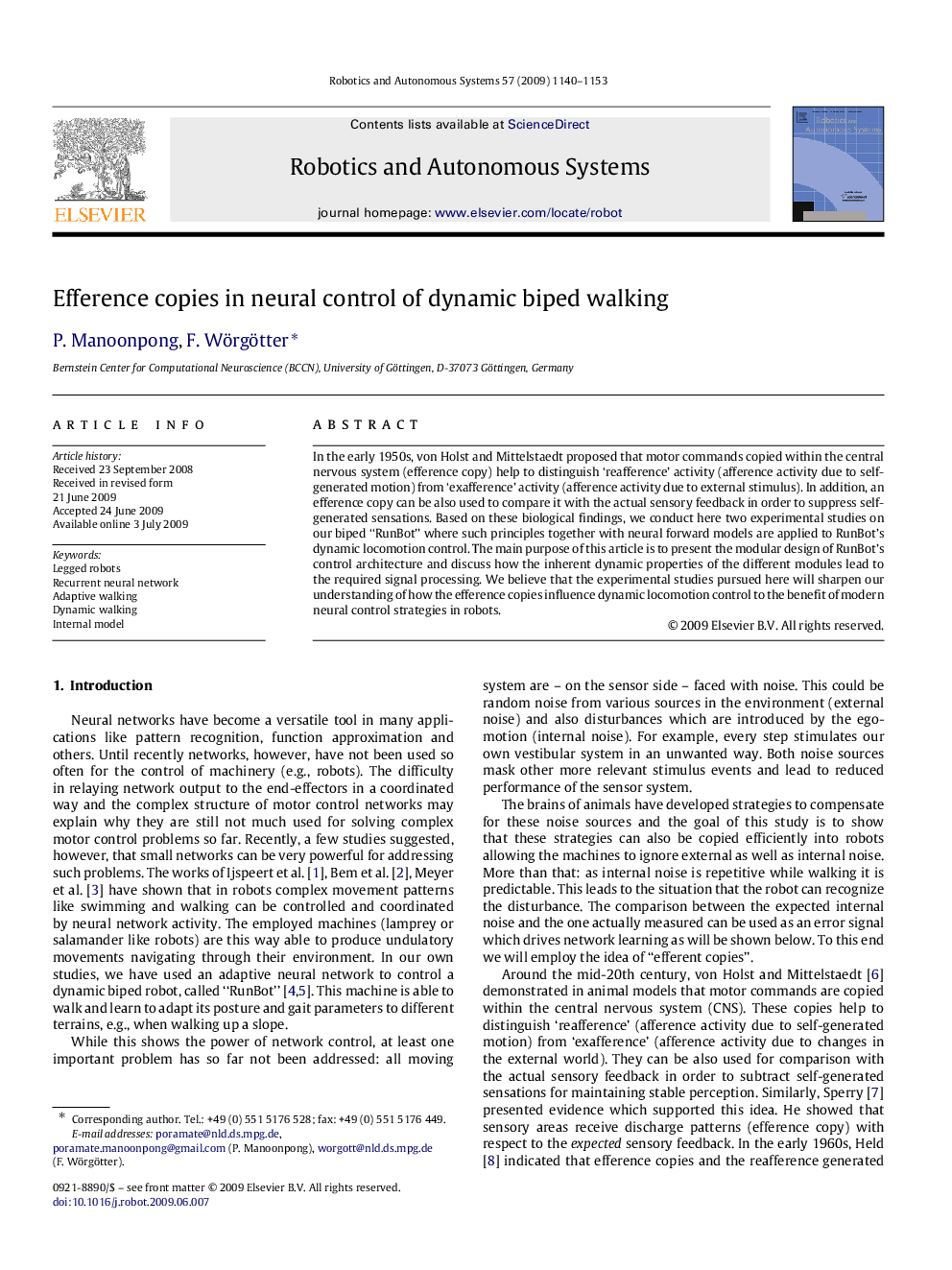| Article ID | Journal | Published Year | Pages | File Type |
|---|---|---|---|---|
| 412396 | Robotics and Autonomous Systems | 2009 | 14 Pages |
In the early 1950s, von Holst and Mittelstaedt proposed that motor commands copied within the central nervous system (efference copy) help to distinguish ‘reafference’ activity (afference activity due to self-generated motion) from ‘exafference’ activity (afference activity due to external stimulus). In addition, an efference copy can be also used to compare it with the actual sensory feedback in order to suppress self-generated sensations. Based on these biological findings, we conduct here two experimental studies on our biped “RunBot” where such principles together with neural forward models are applied to RunBot’s dynamic locomotion control. The main purpose of this article is to present the modular design of RunBot’s control architecture and discuss how the inherent dynamic properties of the different modules lead to the required signal processing. We believe that the experimental studies pursued here will sharpen our understanding of how the efference copies influence dynamic locomotion control to the benefit of modern neural control strategies in robots.
